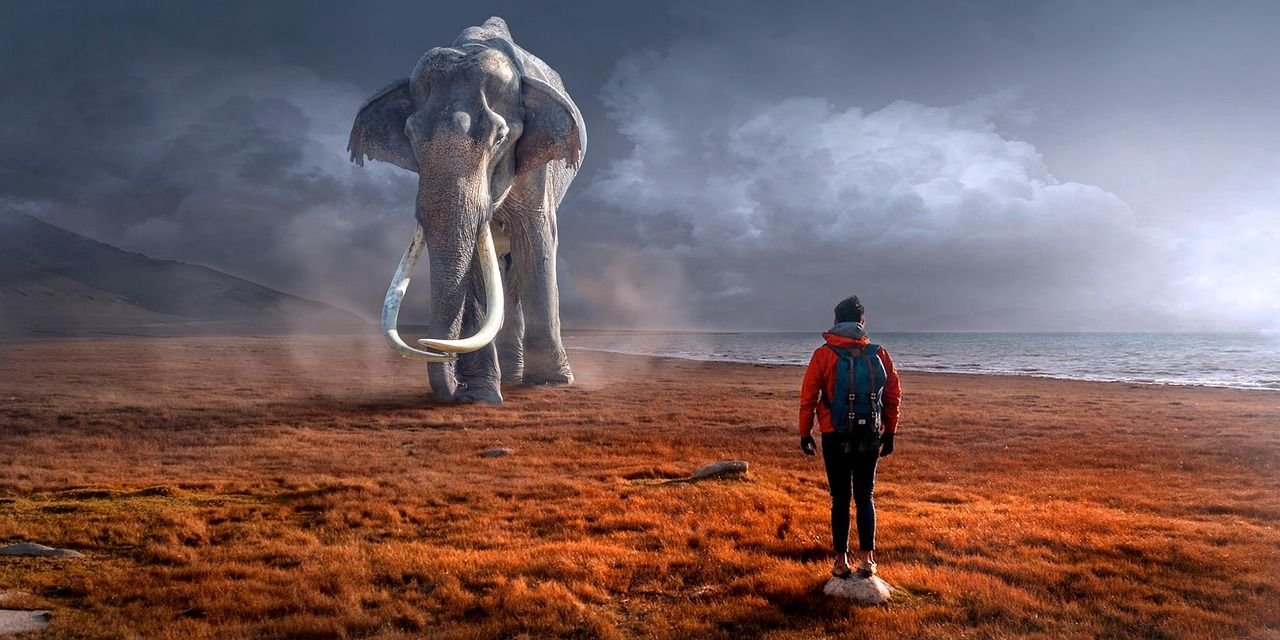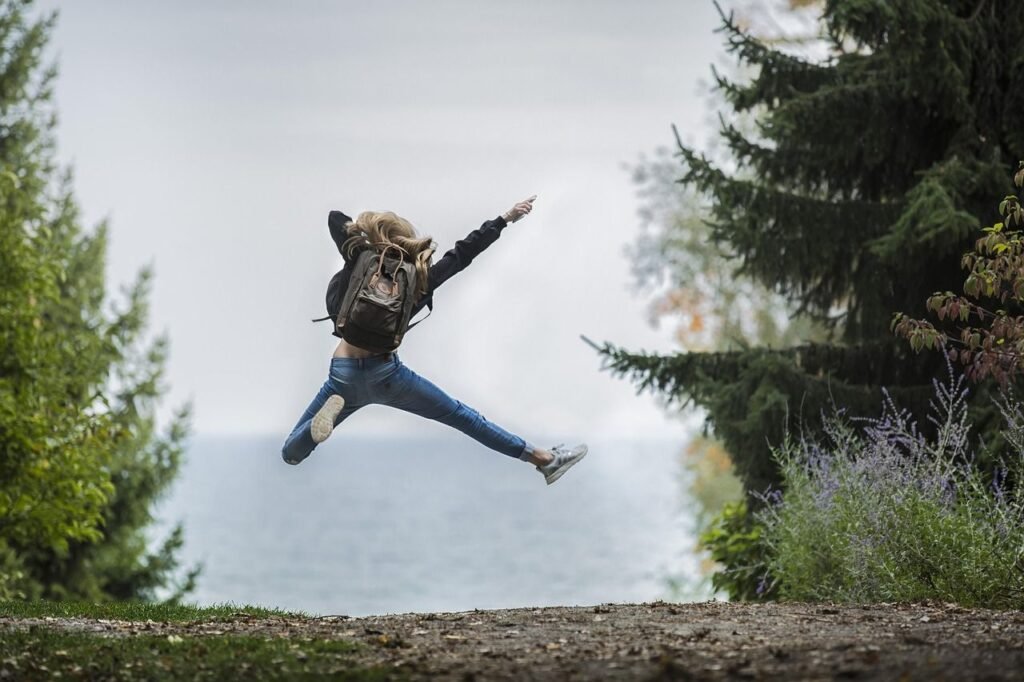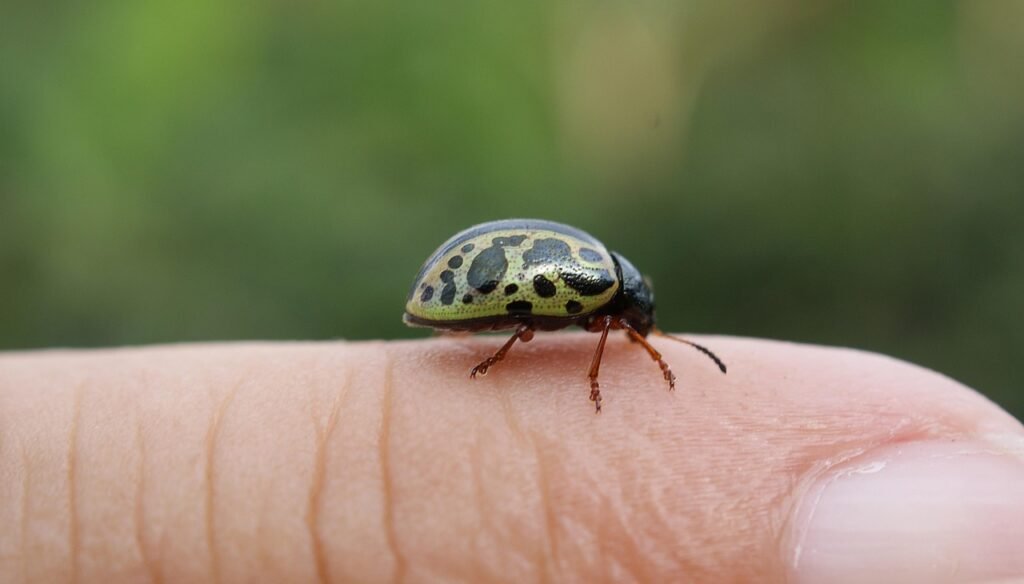Physical Address
304 North Cardinal St.
Dorchester Center, MA 02124


Turn your adventure into confident exploration.
Master your physical adventure anxieties and transform them into confident exploration. Learn proven strategies to overcome insect fears, beginner anxiety, fitness concerns, and wildlife encounter worries for fearless solo adventures.
What if your biggest adventure fears aren’t about getting lost or being unprepared, but about the living, breathing creatures that share our planet? The thought of encountering spiders in a rainforest lodge, attempting your first surfing lesson at age forty, gasping for breath on a mountain trail, or facing a curious bear on a wilderness hike can feel paralyzing. These physical adventure fears often prove more challenging than logistical concerns because they tap into primal survival instincts and deeply personal insecurities.
Physical adventure anxieties represent a unique category of travel fears because they involve our bodies, our capabilities, and our relationship with the natural world. Unlike cultural or navigational concerns that can be solved through research and preparation, physical fears require confronting personal limitations and evolutionary programming that has kept humans alive for millennia.
The irony of modern adventure travel lies in how our safety-focused lifestyles have created new categories of fear. Our ancestors lived intimately with insects, wildlife, and physical challenges that modern travelers approach as exotic threats. Understanding this disconnect helps us develop realistic perspectives on adventure risks while building confidence in our adaptive capabilities.

However, modern insect fears often exceed rational risk assessment by enormous margins.
Entomological anxieties plague countless potential adventurers, transforming tropical paradises into imagined nightmares filled with creepy crawlies, disease vectors, and painful encounters. This fear often stems from childhood conditioning, media sensationalism, and urban lifestyles that minimize insect exposure while maximizing anxiety about rare encounters.
The psychology of insect fear reveals fascinating insights about human evolution and modern conditioning. Our ancestors who avoided venomous spiders and disease-carrying mosquitoes survived to pass on their genes, creating inherited caution about small, potentially dangerous creatures. However, modern insect fears often exceed rational risk assessment by enormous margins.
Distinguishing genuine threats from phobic responses provides the foundation for managing insect anxiety effectively. While certain insects do carry diseases or deliver painful bites, the vast majority pose minimal danger when basic precautions are followed. Understanding specific risks allows for targeted preparation rather than generalized fear.
Malaria and mosquito-borne disease prevention represents the most serious insect-related travel concern for many destinations:
Evidence-Based Mosquito Protection

mosquito repellent
Regional disease vector understanding allows for destination-specific preparation:
Tropical Disease Prevention Strategies
Spider and arachnid anxiety management often involves psychological approaches more than physical protection:
Rational arachnid risk assessment reveals that spider encounters rarely result in serious harm:
Spider Safety Realities

Most species of spiders are harmless to humans.
Practical spider encounter prevention:
Sarah, a marketing executive from London, overcame severe arachnophobia during her solo trip to Costa Rica: “I was terrified of spiders and almost canceled my rainforest adventure. I spent time learning to identify dangerous versus harmless species, practiced breathing techniques for anxiety management, and gradually exposed myself to spider photos and videos. The actual trip revealed that my fears were vastly worse than reality – I saw maybe three small spiders during a week in the jungle.”
Stinging insect awareness helps prevent painful but rarely dangerous encounters:
Bee, wasp, and hornet safety protocols:
Tropical and exotic insect encounters often prove fascinating rather than frightening when approached with knowledge and respect:
Educational insect appreciation:
Insect bite and sting treatment knowledge provides confidence for managing minor encounters:
Basic insect encounter first aid:
Marcus, an engineer from Toronto, discovered unexpected fascination with insects: “I used to be disgusted by bugs and avoided any destination known for insect diversity. During my Amazon trip, our guide’s enthusiasm for incredible insect adaptations completely changed my perspective. I ended up spending hours photographing butterflies, beetles, and even spiders. Fear transformed into genuine appreciation for some of nature’s most incredible creatures.”
Accommodation insect management involves practical strategies for peaceful coexistence:
Insect-resistant lodging selection:
Personal protection systems combine chemical and physical barriers:
Comprehensive insect defense strategies:
The key to overcoming insect fear lies in education, preparation, and gradual exposure that replaces imaginary threats with realistic understanding. Most insect encounters during travel prove harmless or even beneficial, while serious problems remain rare and manageable with appropriate preparation.
Beginner anxiety strikes travelers attempting new activities during solo adventures, creating psychological barriers that prevent enriching experiences. Whether learning to surf in Bali, trying rock climbing in Thailand, or attempting local dance styles in Cuba, the fear of appearing incompetent or making mistakes can overshadow potential joy and growth.
The perfectionism trap affects many accomplished professionals who struggle with beginner status in new environments. Adults accustomed to competence and expertise find the vulnerability of learning new skills psychologically challenging, especially without familiar support systems.
Cultural beginner anxiety intensifies when new activities carry cultural significance or involve interaction with locals who demonstrate effortless mastery. The contrast between tourist clumsiness and local expertise can feel embarrassing rather than educational.
Reframing beginner status as advantage transforms perceived weakness into unique opportunity:
Solo learning benefits that group travel cannot provide:
Individual pace progression:
Cultural bridge building through learning attempts:
Activity selection strategies for building beginner confidence:
Progressive skill development approaches:
Low-stakes practice opportunities:
Jennifer, a lawyer from Boston, discovered joy in beginner experiences during her solo trip to Peru: “I was embarrassed about being terrible at salsa dancing and Spanish cooking, but the local instructors were incredibly patient and encouraging. My clumsy attempts became conversation starters that led to genuine friendships. Now I specifically seek out learning opportunities during my travels because they create the most meaningful connections.”
Physical activity beginner fears often involve safety concerns combined with performance anxiety:
Adventure sport beginner strategies:
Cultural activity beginner approaches:
Age-related beginner anxiety affects travelers who believe certain activities belong to younger people:
Age-appropriate adventure adaptation:
Beginner mistake reframing involves viewing errors as integral learning components rather than personal failures:
Growth mindset application to new activity learning:
Mistake celebration strategies:
Cultural sensitivity in beginner situations requires balance between authentic participation and respectful observation:
Respectful cultural learning approaches:
David, a retired teacher from Melbourne, embraced beginner status during his Southeast Asian adventure: “At sixty-two, I thought I was too old to learn surfing, martial arts, and traditional cooking techniques. The local instructors and other students ranged from teenagers to people older than me, all learning together. Age became irrelevant when everyone focused on enjoyment and cultural appreciation rather than competition.”
Building confidence through beginner success creates positive feedback loops for future learning adventures:
Confidence development techniques:
Beginner community connection provides support systems that extend beyond individual lessons:
Learning community participation:
The fear of being a beginner often proves far more limiting than actual beginner experiences. Most learning situations prove supportive and encouraging, while the personal growth achieved through new skill development provides lasting confidence that extends far beyond travel contexts.
Physical fitness anxiety prevents many from attempting solo adventures involving hiking, cycling, or other demanding activities. The worry about being unable to keep up, requiring rescue, or experiencing physical distress creates significant psychological barriers that often exceed actual physical limitations.
Fitness perfectionism postpones adventures indefinitely while pursuing impossible standards of physical readiness. This approach transforms preparation from practical conditioning into anxiety-driven obstacle creation that prevents rather than enables adventure.
Realistic fitness assessment involves honest evaluation of current capabilities while avoiding perfectionist standards:
Current ability evaluation techniques:
Activity-appropriate fitness development targets specific physical demands rather than general athletic excellence:
Adventure-specific conditioning programs:
Hiking and trekking preparation:
Cycling adventure conditioning:
Water sport preparation:
Mountain and altitude preparation:
Lisa, a desk worker from Phoenix, transformed her fitness approach for adventure travel: “I convinced myself I needed to become an athlete before attempting hiking in Peru. My trainer helped me focus on specific conditioning for trekking rather than general fitness perfection. By departure time, I felt prepared and confident rather than anxious about physical challenges. The actual hiking proved challenging but completely manageable with my targeted preparation.”
Equipment and technology assistance can bridge fitness gaps while maintaining adventure authenticity:
Fitness-enhancing gear options:
Graduated difficulty progression builds confidence while developing fitness:
Progressive challenge approaches:
Group versus solo fitness considerations affect both safety and confidence:
Solo fitness safety protocols:
Alternative adventure options maintain excitement while accommodating fitness limitations:
Fitness-adaptive adventure strategies:
Age and fitness intersection requires realistic assessment without artificial limitations:
Age-appropriate adventure adaptation:
Michael, a fifty-five-year-old accountant from Denver, discovered fitness confidence through adventure preparation: “I thought my sedentary lifestyle disqualified me from adventure travel. Working with a trainer who understood my travel goals, I developed hiking-specific fitness that transformed both my physical capabilities and self-confidence. Now I actively seek destinations that challenge me physically because I’ve learned to prepare appropriately.”
Body awareness and limitation recognition prevents overexertion while enabling appropriate challenge:
Safe challenge navigation:
Fitness motivation through adventure goals creates positive feedback loops:
Adventure-driven fitness development:
Mental fitness component proves equally important as physical conditioning:
Psychological preparation for physical challenges:
The fear of physical unfitness often proves more limiting than actual fitness levels. Most adventure activities can be adapted to various fitness levels, while appropriate preparation builds both physical capability and psychological confidence for meaningful adventure experiences.
Wildlife encounter anxieties range from rational cautions about genuinely dangerous animals to exaggerated fears based on media sensationalism and evolutionary programming. These fears often overshadow statistical realities while preventing extraordinary natural experiences that define adventure travel.
Media distortion of wildlife risks creates disproportionate fear through sensationalized reporting of rare incidents while ignoring millions of safe wildlife encounters. Horror stories about shark attacks, bear maulings, and venomous snake bites dominate headlines while peaceful wildlife observations receive no attention.
Evolutionary fear programming triggers intense responses to predator encounters even when modern safety measures virtually eliminate actual risks. Our ancestors who feared large carnivores and venomous creatures survived to pass on those genes, creating inherited caution that often exceeds current necessity.
Risk assessment reality checks provide foundation for managing wildlife anxiety through factual understanding:
Statistical perspective on wildlife dangers:
Regional wildlife awareness enables destination-specific preparation rather than generalized fear:
African Safari Wildlife Safety:
Tropical Rainforest Encounter Preparation:
Mountain and Wilderness Safety Protocols:
Marine Environment Precautions:
Amanda, a marine biologist from San Diego, addresses wildlife fears through education: “I’ve encountered everything from great white sharks to grizzly bears during my research travels. Understanding animal behavior transforms fear into fascination and respect. Most wildlife encounters prove beneficial for both humans and animals when approached with knowledge, preparation, and appropriate caution rather than paranoia.”
Practical wildlife safety measures focus on prevention and appropriate response rather than avoidance:
Universal wildlife safety principles:
Specific animal encounter protocols provide concrete response strategies:
Large mammal encounter responses:
Venomous creature safety strategies:
Professional guide utilization provides expertise and safety enhancement for wildlife-rich destinations:
Guide service evaluation criteria:
Technology and equipment for wildlife safety:
Wildlife photography safety considerations balance incredible photo opportunities with personal security:
Safe wildlife photography practices:
Carlos, a photographer from Madrid, developed wildlife encounter confidence through gradual exposure: “My first African safari terrified me – I imagined constant danger from every animal we encountered. Working with experienced guides and learning animal behavior helped me understand that most wildlife actively avoids human contact. Now I’ve photographed jaguars in the Amazon, polar bears in Svalbard, and countless other species. Knowledge and respect are your best safety tools.”
Emergency response preparation provides confidence for handling unlikely but serious wildlife encounters:
Comprehensive emergency planning:
Wildlife encounter benefits often outweigh risks when appropriate safety measures are followed:
Positive wildlife encounter outcomes:
The fear of dangerous wildlife encounters often proves far more limiting than actual wildlife risks. Most wildlife actively avoids human contact, while proper preparation and expert guidance make incredible wildlife experiences both safe and transformative.
How serious are insect-related health risks during adventure travel? Insect-borne diseases represent genuine but manageable risks in certain regions. Malaria, dengue, and Zika require specific precautions including repellents, protective clothing, and sometimes preventive medication. Most insect encounters involve minor annoyances rather than serious health threats when basic protection measures are followed.
Am I too old/unfit to start adventure activities? Adventure activities can be adapted to virtually any age and fitness level. Focus on appropriate preparation, realistic goal setting, and professional instruction rather than comparing yourself to experienced participants. Many adventure operators specialize in programs for beginners and diverse fitness levels.
What should I do if I encounter dangerous wildlife? Remain calm, avoid sudden movements, and follow specific protocols for the animal type. Most wildlife encounters resolve safely when humans demonstrate non-threatening behavior and respect animal space. Professional guides provide excellent training for specific regional wildlife safety protocols.
How can I overcome my phobia of spiders/snakes while traveling? Gradual exposure therapy, education about actual risks versus perceived threats, and practical preparation help manage specific animal phobias. Consider consulting with a mental health professional before departure for severe phobias that might prevent meaningful travel experiences.
Is it safe to attempt new adventure activities alone? New activities require additional safety considerations when attempted solo. Choose reputable instruction providers, inform others about your plans, carry emergency communication devices, and consider group lessons or guided experiences for particularly challenging activities.
How do I prepare physically for adventure travel? Start fitness preparation well before departure, focusing on activity-specific conditioning rather than general fitness. Consult healthcare providers about any concerns, build endurance gradually, and include strength and flexibility training appropriate to your intended adventures.
What gear is essential for wildlife safety? Essential wildlife safety gear varies by destination but typically includes emergency communication devices, appropriate deterrents like bear spray, quality camping equipment for food storage, first aid supplies, and navigation tools. Research specific requirements for your intended destinations and activities.
Physical adventure fears represent some of our most primal anxieties, connecting to evolutionary survival mechanisms and deeply personal insecurities about our capabilities. Yet these same fears often prove the most rewarding to overcome, leading to extraordinary experiences and profound personal growth that purely intellectual or cultural travel cannot provide.
Your concerns about insects, beginner status, physical fitness, or wildlife encounters aren’t character flaws – they’re normal human responses that can be managed, redirected, and transformed into adventure fuel. Every experienced adventurer once faced identical anxieties about physical challenges and potential dangers.
The natural world that currently triggers your fears contains some of Earth’s most incredible experiences waiting to be discovered. Tropical rainforests teeming with fascinating insects, challenging mountain trails offering breathtaking vistas, crystal-clear waters perfect for learning new skills, and wildlife encounters that change perspectives on our place in nature.
Your physical limitations are rarely as restrictive as your mental barriers suggest. With appropriate preparation, realistic goal setting, and gradual challenge progression, most people discover capabilities they never imagined possessing.
The confidence gained from overcoming physical adventure fears extends far beyond travel contexts, improving overall self-perception and life satisfaction. Facing your fears about insects transforms into general anxiety management skills. Surviving your first beginner lesson builds confidence for trying new things in all life areas. Developing adventure fitness creates lasting health improvements. Successfully managing wildlife encounters demonstrates your adaptability and resilience.
Ready to conquer your physical adventure fears and unlock extraordinary experiences? Visit travelgoeasy.net for expert adventure travel planning, comprehensive safety resources, and exclusive deals on accommodations and activities designed for every fitness level and experience range. Our platform specializes in supporting solo adventurers through personalized guidance and confidence-building travel experiences.
Your transformation from fearful observer to confident adventurer begins with a single brave decision. Choose growth over safety, discovery over limitation, and extraordinary natural experiences over imaginary barriers.
This article is exclusively created for travelgoeasy.net and protected by copyright. All content, including safety protocols, preparation strategies, and expert advice, is proprietary and intended solely for use on our platform. Unauthorized reproduction or distribution is strictly prohibited.




